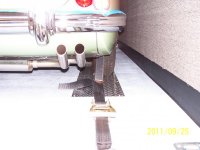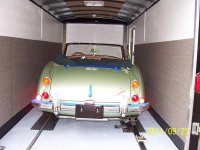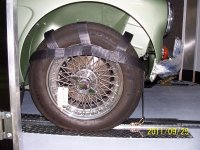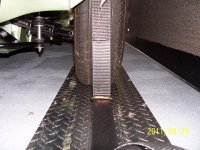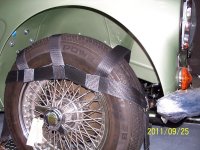Offline
Patrick--
Look into an electric jack for the front. I know it sounds like an unnecessary item but you will come to appreciate it when you have to jack the traker up to get the ball under the tongue, then down to secure it, then back up to install the stabilizer bars and then back down to finish.
I also installed an electric winch inside to load the car off and on. While not a necessity it is a convenience and as someone once told me sooner or later something will happen that will make it difficult to roll the car on without a lot of assistance. That has happened twice to me--once when I broke a rear axle and another after a wreck at PVGP. By having the winch to do the heavy pulling I was able to get the car in the trailer without a dolly, etc.
Like closets, you will quickly find lots of stuff to take along and fill whatever space you have aboard. I keep my tools and most spares in my trailer rather than leaving them home--cars don't break in the shop but rather at the track.
Look into an electric jack for the front. I know it sounds like an unnecessary item but you will come to appreciate it when you have to jack the traker up to get the ball under the tongue, then down to secure it, then back up to install the stabilizer bars and then back down to finish.
I also installed an electric winch inside to load the car off and on. While not a necessity it is a convenience and as someone once told me sooner or later something will happen that will make it difficult to roll the car on without a lot of assistance. That has happened twice to me--once when I broke a rear axle and another after a wreck at PVGP. By having the winch to do the heavy pulling I was able to get the car in the trailer without a dolly, etc.
Like closets, you will quickly find lots of stuff to take along and fill whatever space you have aboard. I keep my tools and most spares in my trailer rather than leaving them home--cars don't break in the shop but rather at the track.

 Hi Guest!
Hi Guest!

 smilie in place of the real @
smilie in place of the real @
 Pretty Please - add it to our Events forum(s) and add to the calendar! >>
Pretty Please - add it to our Events forum(s) and add to the calendar! >> 


